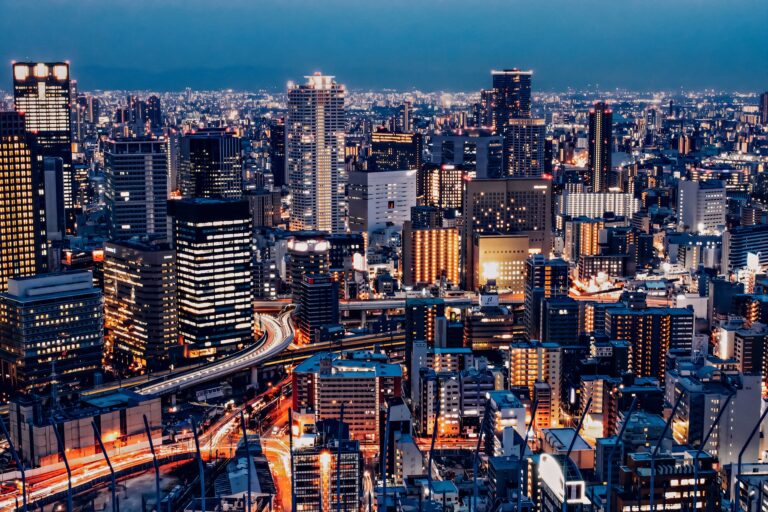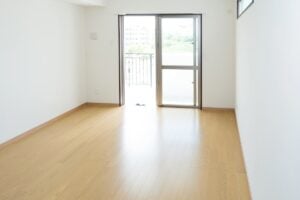
So you’ve found your dream job in Japan, and the next step is finding an apartment. This can be difficult anywhere in the world, but Japan has its own set of, let’s call them ‘quirks’, that you need to take into account. In this article, we’ll take a comprehensive look at the Japanese rental system, how to begin the process, and a breakdown of the ridiculous initial payment that you’ll have to make.
Finding an Agent
First, you want to find a real estate agency, or fudosan-ya.
There will be dozens (if not hundreds) of these in each major city in Japan. When dealing with lease agreements and contracts, it’s best (and usually necessary) to find an agent to work as an intermediary for you. Most agents will welcome prospective customers who walk in from the street, but if you’re not confident in your ability to communicate in Japanese, then it’s better to look for companies that exclusively deal with foreigners: BEST-ESTATE.JP, and Asumirai are two such companies.
What the heck is a LDK?
Once you meet with an agent, they’ll ask you about your desired location, apartment size, and floor plan.
Understanding Japanese floor plans can seem daunting at first, but here’s some helpful Japanese to look out for:
- バルコニー: balcony
- K: kitchen
- UB: unit bath
- SB: shoes box
- CL or 押入: closet
- DK: dining kitchen
- 収納: storage
- 洗面室: washroom
- 玄関: entrance hall
- 洋室: Western style room (with a wooden floor)
- 和室: Japanese style room (with tatami mat floor)
- 帖: counter for Tatami mats. 1帖 = 1.65㎡

Rooms in Japan are sometimes measured by the “tatami mats”, so it is common to see a bedroom advertised as being 6帖 in size, which is 6 tatami mats or 9.9㎡. Also, apartments as a whole are described by the number of rooms included (that’s all the rooms, not just bedrooms). So a 1LDK is an apartment with 1 bedroom, and a combined Living-Dining-Kitchen.
Now, an apartment with a living room dining room, and kitchen may sounds large (especially to folks from Europe or the US), but in reality in Japan it will most likely just be a single room with small sections for living and dining. For example, a 2LDK apartment may still only be around 50㎡.
A 2K is an apartment with 2 rooms plus a Kitchen.
A ワンルーム (wan-room) is a studio apartment all enclosed in the one-room.
Once you’ve found an apartment, or a few that look good, your estate agent will organise the viewings for you.
What to expect when viewing a Japanese apartment
Almost all apartments in Japan (especially the cheaper ones) will come completely bare.
With just the bathroom unit and kitchen sink included, you’ll have to buy everything once you move in: furniture, cooking stove, and in some cases, even the air conditioning. There are some companies that provide furnished apartments, such as Leo Palace, which your estate agent can help you find.
Once you’ve visited the apartment, you need to prepare to sign the contract. For this you’ll need a copy of your passport and residence card, proof of employment (if you’re on a work visa) or proof of enrollment (if you’re on a student visa). On top of this, you’ll need a guarantor. A guarantor is a designated Japanese person who will be liable to pay your rent should you miss a payment. If you’re employed, then this could potentially be your employer, it could also be a friend, but if you’re new to Japan then you might have to employ the services of a guarantor company that is chosen by the estate agent. The usual charge for this service is around 50% of one month’s rent, plus a yearly renewal fee of about ¥10,000. Some apartments, such as government UR apartments, don’t require guarantors, and we’ll look into these later.
The initial costs
Once all the paperwork is sorted, you’re ready to sign the contract and make the initial payment. This first bill will be a shocking amount of money, so be prepared, as it could end up being up to six-times your monthly rent.
Here’s what you’ll be expected to pay upfront:
Key Money 礼金: this is a non-refundable “payment of gratitude” that you pay to the homeowner. It’s usually equal to one, or two, months rent but there are some properties that don’t require this (you can ask your estate agent to specifically search for these).
Deposit 敷金: this a refundable payment to the homeowner to cover any damages to the property while you’re there. This tends to be either one or two months rent.
Agent fee 仲介手数料: This is the commission paid to the estate agent. Fortunately this is restricted by Japanese law to be no more than one month’s rent. Some will charge half a month’s rent, while others will charge nothing at all (such as for the government UR apartments).
Fire insurance 火災保険: This is just what it sounds like. It’s non-refundable, and costs between ¥10~20,000 in most cases. This is required for most properties.
First month’s rent 前家賃: This number is typically averaged from the number of days left in the month you move in, plus the following month’s rent. Therefore, the amount differs depending on when the contract is signed (moving in at the beginning of the month will be a lot more expensive than at the end of the month).
Guarantor company fee 保証会社利用料: If you’re using the services of a guarantor company, then you’ll pay this in your initial costs.
So let’s look at an example:
You’ve found an apartment for ¥65,000 a month, plus ¥3,000 for service fees (upkeep of the elevator, common areas, etc.).
You move into a new apartment on June 15th. So you’ll have to pay for the remaining days in June (¥36,000), plus July’s rent and service fee (¥68,000). Key money (1~2 months rent at ¥65,000~¥136,000), deposit (1~2 months rent at ¥65,000~¥136,000), estate agents fee (¥65,000), fire insurance (¥20,000), key exchange fee (you often have to pay for new keys to be cut at around ¥20,000). If you don’t have any relatives in Japan, you’ll need to use the services of a guarantor company, which is usually 1 months rent (¥65,000).
For a whopping grand total of ¥404,000 ~ ¥546,000! Quite the sum to move into a totally empty apartment.

Some advice
If you can’t bear the idea of paying the exorbitant upfront costs, or just can’t afford to, then I would recommend a UR Apartment. This is a government housing scheme that doesn’t charge key money, agent fees, renewal fees, and you don’t even need a guarantor. “What’s the catch?” I hear you cry. Well, the better UR apartments in desirable locations don’t often become available, and when they do they go very quickly. All cities will have a UR office, so pop in and have a look at what they have available, or I’d also recommend the company Whitestone, their staff speak English and their website is in English. Or, despite being based in Fukuoka, Fukuoka Apartments is an English speaking real estate company that can help you with UR apartments across Japan.
Something that does happen, not with UR, but with private landlords, is you could be rejected because you’re a foreigner. This is awful, and racist, but there’s unfortunately nothing that can be done, so you’ll just have to brush it off and find another apartment.
You need to have a Japanese bank account to rent in Japan, and to open a bank account you need a Japanese phone number. So the first thing you want to do is get a mobile phone contract, then open a bank account, then visit an estate agent.
Most apartments don’t include utilities, so you’ll have to organise getting these set-up before you move in. If you’re lucky, your estate agent can help with these.
Rather than forking out a few thousand dollars to furnish the apartment, I’d start by looking at the various Facebook groups of people who are either leaving Japan (Sayonara sales) or selling or giving away their old stuff (Mottainai). You can pick up some decent starter furniture for a fraction of the price.
Hopefully this information can help you find your new home. If you have any questions about the apartment finding process, we’d love to hear from you with the “Leave Your Thoughts” function below.

















